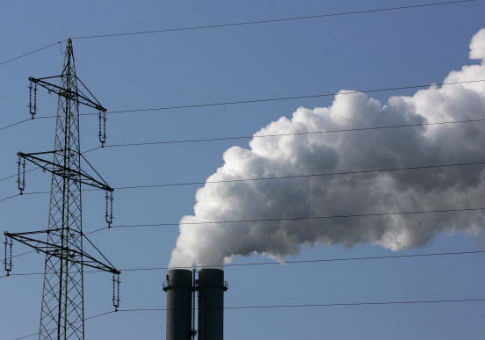The United States in 2017 experienced the largest decline in carbon emissions in the world, according to a recent report.
The American Enterprise Institute, a conservative think tank, said the U.S. last year had a growth rate in carbon emissions of -0.5 percent and a decrease of 42 million tons, citing data from oil giant BP's Statistical Review of World Energy, published in June.
Chart of the Day: Last year the United States had the largest decline in CO2 emissions *in the entire world* for the 9th time this century. @AEIdeas @Mark_J_Perry https://t.co/BCnKJTirfE pic.twitter.com/8wN5kZJBDK
— AEI (@AEI) July 14, 2018
Last year marked the ninth time in this century that the U.S. has had the largest decline in emissions in the world; 2017 was also the third consecutive year that emissions in the U.S. declined, although the decline was the smallest over the three-year period.
Ukraine had the world's second largest decline, with a growth rate of -10.1 percent and a 28.1-million-ton decrease in emissions.
Carbon emissions from energy increased worldwide last year, growing by 1.6 percent and 426.4 million tons. China led that growth, increasing its emission totals by 119 million tons at a rate of 1.6 percent. Since the turn of the century, China has had the world's largest surges in carbon emissions all but four times.
India, which ranked second behind China last year, had led the world in growing carbon emissions from 2014 to 2016.
President Donald Trump faced severe opposition after he announced in June 2017 that the U.S. would withdraw from the Paris climate accord, saying the deal "would undermine our economy, hamstring our workers, weaken our sovereignty, impose unacceptable legal risks, and put us at a permanent disadvantage to the other countries of the world."
Democrats said Trump was imprudent and his commitment to leave the accord could backfire.
"President Trump's decision to pull the United States out of the Paris climate accord is a stunning abdication of American leadership and a grave threat to our planet's future," House Minority Leader Nancy Pelosi (D., Calif.) said at the time. "In walking away from this agreement, the president is denying scientific truths, removing safeguards that protect our health and our environment, protecting polluters and their dirty energy agenda, and threatening our national and global security."
American Enterprise Institute scholar Mark Perry said the U.S. exit from the accord did not have a direct impact on the decrease in carbon emissions last year, because Trump's announcement was made in June and the full withdrawal would not take place until November 2020. The U.S. must continue reporting carbon emissions to the United Nations until its exit from the deal has been completed.
Perry said the increase in natural-resource use has been a major factor in the reduction of carbon emissions over the past 10 years.
"I would credit America's Shale Revolution, which started in about 2007, as the main driver behind the CO2 reductions, especially because of the substitution of natural gas for coal to generate electric power in the US—which will likely continue," Perry told the Washington Free Beacon.
Compared to coal, natural gas releases about half of the carbon emissions to create the same amount of electric power. Coal's share of energy sources for electricity has fallen below 30 percent in the last decade as natural shale gas became more abundant, according to Perry.
"We can thank the underground oceans of America's natural gas that are now accessible because of the revolutionary, advanced drilling and extraction technologies of hydraulic fracturing and horizontal/directional drilling, and are increasingly displacing coal for the nation's electricity generation," Perry wrote on his blog "Carpe Diem."
